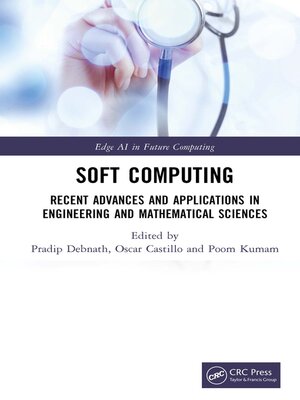Soft Computing
ebook ∣ Recent Advances and Applications in Engineering and Mathematical Sciences · Edge AI in Future Computing
By Pradip Debnath

Sign up to save your library
With an OverDrive account, you can save your favorite libraries for at-a-glance information about availability. Find out more about OverDrive accounts.
Find this title in Libby, the library reading app by OverDrive.



Search for a digital library with this title
Title found at these libraries:
| Library Name | Distance |
|---|---|
| Loading... |
This book explores soft computing techniques in a systematic manner starting from their initial stage to recent developments in this area. The book presents a survey of the existing knowledge and the current state-of-the-art development through cutting-edge original new contributions from the researchers. Soft Computing: Recent Advances and Applications in Engineering and Mathematical Sciences presents a survey of the existing knowledge and the current state-of-the-art development through cutting-edge original new contributions from the researchers.
As suggested by the title, this book particularly focuses on the recent advances and applications of soft computing techniques in engineering and mathematical sciences. Chapter 1 describes the contribution of soft computing techniques towards a new paradigm shift. The subsequent chapters present a systematic application of fuzzy logic in mathematical sciences and decision-making. New research directions are also provided at the end of each chapter. The application of soft computing in health sciences and in the modeling of epidemics including the effects of vaccination are also examined. Sustainability of green product development, optimum design of 3D steel frame, digitalization investment analysis in the maritime industry, forecasting return rates of individual pension funds are among some of the topics where engineering and industrial applications of soft computing have been studied in the book. The readers of this book will require minimum prerequisites of undergraduate studies in computation and mathematics.
This book is meant for graduate students, faculty, and researchers who are applying soft computing in engineering and mathematics. New research directions are also provided at the end of each chapter.







